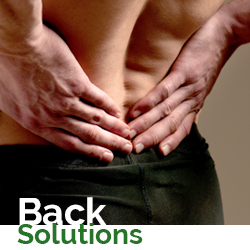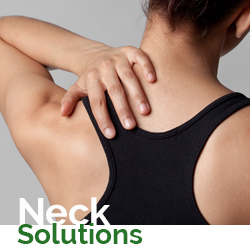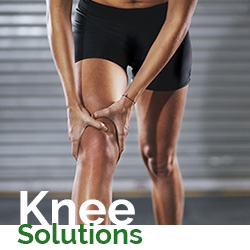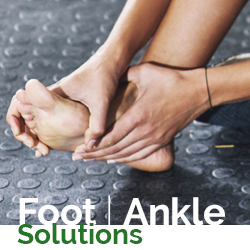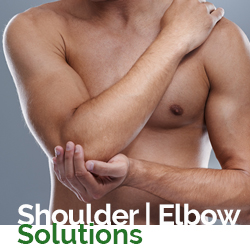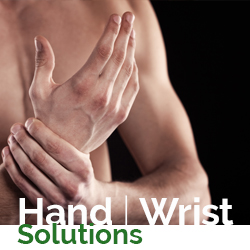POST OPERATIVE Q&A AFTER AMPUTATION
Q: WHY IS THERE SO MUCH SWELLING?
A: Swelling is a natural reaction to the trauma of surgery and will continue throughout the
healing process. There is also a tendency for fluids to build up as a result of less muscle activity
in the amputated limb.
Q: HOW DO I REDUCE THE SWELLING?
A: Wrapping with elastic bandages or using elastic “shrinkers” decreases the swelling and helps
shape the residual limb. It is important that you keep your residual limb properly wrapped or
within the shrinker at all times. The swelling will continue to decrease over the next several
months as your residual limb shrinks significantly from both fluid loss and muscle inactivity.
Q: HOW SHOULD I TAKE CARE OF MY RESIDUAL LIMB AFTER SURGERY?
A: After the first dressing is changed, an elastic bandage should be used to wrap the residual
limb. This bandage should be removed and rewrapped several times each day so it will continue
to provide adequate support as your limb shrinks.
Q: WHAT IS PHANTOM PAIN?
A: Many people experience the sensation that the amputated limb is still present. You may have
the sensation of tingling, itching, or movement, as well as fleeting episodes of sharp, squeezing,
or burning pain. The causes of phantom sensation are not clearly understood, but the experience
usually disappears within a few months after surgery. Inform your doctor and prosthetist of any
discomfort that you may experience.
Q: HOW SOON AFTER SURGERY WILL I GET MY PROSTHESIS?
A: Many factors determine when you are ready for your first prosthesis. Your residual limb must
be well-healed with no tenderness and minimal swelling. Generally, if there are no
complications, the first fitting occurs approximately four to five weeks after amputation. If you
have poor circulation, the fitting may be delayed an additional two to three weeks to allow for
adequate healing.
Q: HOW SHOULD I CLEAN MY RESIDUAL LIMB?
A: Wash your residual limb daily with soap and water. Avoid lotions, oils, or creams because
they tend to soften the skin and make it more susceptible to skin breakdown. Always check your
residual limb thoroughly for any scrapes, cuts, sores, or reddened areas.
Q: HOW DO I PREPARE MY BODY FOR WEARING MY PROSTHESIS?
A: Exercise is important in increasing your overall strength and flexibility and preparing your
muscles for the prosthesis. A physical or occupational therapist assesses your overall physical
condition and may prescribe an exercise program. Isometric exercise, which involves tightening and relaxing
the muscles, helps you maintain good muscle tone and can be started while you are still in bed.
Along with exercise, gradually desensitizing your residual limb is an important step in preparing
for your prosthesis. Begin by massaging your limb, then work up to patting it, rubbing it with a
towel, and even lightly slapping your residual limb. Preventing contractures (the tightening of
the muscles and joints) also makes wearing your prosthesis easier.
Q: WHAT PROSTHESIS IS BEST FOR ME?
A: Your prosthetist consults with your physician regarding the prescription for a prosthesis.
There are many individual factors to consider in prescribing the right prosthesis for you. Some of
these include the shape and condition of your residual limb, overall medical and physical
condition, previous activity level and lifestyle, commitment, and financial situation. Discuss your
interests, lifestyle, work and goals with your prosthetist, so he or she can design a prosthesis that
provides the highest level of function and independence possible.
Q: HOW IS MY PROSTHESIS MADE?
A: Your prosthesis is made up of many different components selected specifically for you and
your lifestyle. Your prosthetist begins by taking a series of measurements and a cast of your
residual limb. From the cast, a mold is made and used to design a custom socket. Your residual
limb fits snugly in the socket which is attached to the other components that make up your
prosthesis. There are also a variety of skin-like coverings that can be used to resemble your other
limb as closely as possible.
Q: HOW DO I LEARN TO USE MY PROSTHESIS?
A: During the initial fittings, your prosthetist guides you through the basic principles of using
your prosthesis, fine-tuning the fit and alignment as needed. For lower limb amputees, more
extensive training (walking on different terrains, climbing stairs, getting in and out of a car) is
provided by a physical therapist. If you have an upper limb prosthesis, an occupational therapist
helps you perform daily living activities such as grooming, eating and handling various objects.
Q: HOW MUCH WILL MY PROSTHESIS COST?
A: Your prosthesis is custom-designed to meet your specific needs using advanced and
expensive materials and components. Insurance coverage varies widely, but most private
insurance plans and Medicare pays large portion of the charges. Medi-Cal covers certain types of
prosthetic devices. Many HMO and FPO plans do not cover prosthetic devices unless you have
the higher option plans that include orthotic and prosthetic devices.You will probably have many
questions before and after your amputation. We encourage you to talk to your physician,
therapist, and prosthetist, and discuss your concerns and receive answers to your questions.
Q: HOW LONG WILL MY FIRST PROSTHESIS LAST?
A: Your first prosthesis is usually worn for about three to six months. During this time, your
residual limb continues to shrink and becomes less sensitive. Your prosthetist also makes many
adjustments, and prosthetic socks may be added to help the socket fit properly as your limb
shrinks. You learn to walk and balance on your new prosthesis, which helps shrink the residual
limb faster. If you’ve lost an arm, your first prosthesis allows you to pick up objects and regain
daily living skills.
Q: WHEN WILL I BE READY FOR MY DEFINITIVE PROSTHESIS?
A: As soon as your residual limb is healed and the size and shape have stabilized, you are ready
for a more complex “definitive” prosthesis. Your definitive prosthesis can last for many years
especially if you take proper care of it and have it periodically “checked and serviced” by your
prosthetist. Also, it is very important that you maintain your weight. Even a ten-pound weight
gain or loss could affect the prosthetic fitting, which requires adjustments or a new prosthesis.
Q: HOW DO I TAKE CARE OF MY RESIDUAL LIMB
A:
1. Every day, or more often if necessary, wash your residual limb with a mild or antibacterial
soap and lukewarm water. Rinse thoroughly with clean water to remove all soap.
2. Dry your skin by patting it with a towel. Be sure your residual limb is completely dry before
putting on your prosthesis. Allowing 15 minutes of air-drying before applying your prosthesis
should ensure that the skin is thoroughly dry.
3. Consult your prosthetist before using moisturizing creams or lotions. Vaseline or petroleum-
based lotions degrade some types of prosthetic liners. Only use soflening lotions when your skin
is at risk of cracking or peeling. If a moisturizing lotion is needed, it is best to apply it at night or
at other times when you will not be wearing your prosthesis. Do not apply lotions to any open
area.
4. If needed, applying an antiperspirant roll-on deodorant to the residual limb can help you
control odor and perspiration. Do not apply antiperspirant to any open area.
5. Do not use alcohol-based products on your residual limb; they dry out the skin and can
contribute to cracking or peeling.
6. Do not shave your residual limb; pressure from the prosthetic socket on “stubble” can cause
the hair to grow inward, become painful, and, in the worst cases, even become infected. Never
use chemical hair removers on your residual limb.
7. Avoid prolonged soaking in warm bathtubs or hot tubs because this may cause increased
swelling in your residual limb.
Q: HOW DO I INSPECT MY RESIDUAL LIMB
A:
1. Regular inspection of your residual limb using a long-handled mirror will help you identify
skin problems early.
2. Initially, inspections should be done whenever you remove your prosthesis. Later on, most
amputees find daily inspection sufficient for the early identification of skin problems.
3. Inspect all areas of your residual limb. Remember to inspect the back of your residual limb
and all skin creases and bony areas.
4. Look for any signs of skin irritation, blisters or red marks that do not fade within 10 minutes
of removing your prosthesis. Report any unusual skin problems to a member of your
rehabilitation team.
Q: HOW CAN I DEAL WITH PERSPIRATION
A: Perspiration may increase following an amputation for a couple of reasons. One reason has to
do with decreased body surface following an amputation. You may be perspiring the same
amount, but it is concentrated over a smaller body surface. Another reason is that during
prosthetic use, your residual limb is encased in a completely or partially airtight socket that does
not allow sweat to evaporate. In most cases, daily bathing and the application of an antiperspirant
is sufficient to control this. If odor or heavy perspiration continues to bother you, discuss other
available treatment options with your physician.

